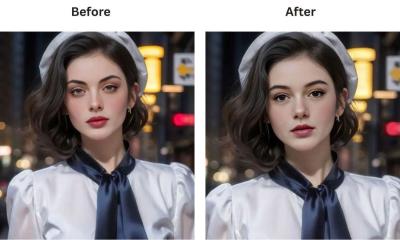Image occlusion is a fascinating feature in Anki that transforms the way you study visual information. Instead of merely memorizing facts, this method enables you to hide parts of images, allowing you to quiz yourself on the unseen sections. This technique is particularly beneficial for subjects that rely heavily on images, like anatomy, geography, or language learning. By engaging with the material actively, you're likely to enhance retention and recall. If you’re a visual learner or want to add a dynamic twist to your study routine, image occlusion in Anki is worth exploring!
Setting Up Image Occlusion Enhanced Add-On
Getting started with the Image Occlusion Enhanced add-on in Anki is a breeze! Here’s a step-by-step guide to help you set it up:
- Install the Add-On:
To begin, open Anki and navigate to 'Tools' > 'Add-ons'. Click on 'Get Add-ons' and enter the code for the Image Occlusion Enhanced add-on, which is 1374772155. Hit 'OK' to download and install it.
- Restart Anki:
After installation, restart Anki to ensure the add-on is properly integrated.
- Upload Your Image:
Select the 'Tools' menu again, and this time click on 'Image Occlusion Enhanced'. You can upload an image from your device or use an online source. Make sure the
- Create Occlusions:
Once your image is uploaded, use the drawing tool to highlight the areas you want to hide. You can create multiple occlusions for one image! Click 'Add' after setting the occlusions to create flashcards.
- Study Your Cards:
Now, head to your study deck! You’ll see the images with occluded parts, prompting you to recall the hidden information. This is where the magic happens!
And there you have it! With just a few simple steps, you can enhance your Anki experience through image occlusion, making your study sessions more interactive and effective.
Creating Your First Image Occlusion Card
Creating your first Image Occlusion card in Anki can be an exciting step toward mastering complex information. Let’s walk through it together!
- Open Anki and Select Your Deck: Start Anki and choose the deck where you want to create the card. It’s like picking your favorite playground!
- Go to the Add Card Section: Click on the “Add” button at the top. You’ll see a new window pop up for card creation.
- Select the Image Occlusion Add-On: In the card type dropdown, choose “Image Occlusion Enhanced.” This is where the magic happens!
- Upload Your Image: Click on the “Choose File” button to upload the image you want to use. This could be anything from a diagram to a map.
- Mask Areas of the Image: Use the masking tool to cover parts of the image you want to recall later. Just click and drag over the areas. Think of it as playing hide-and-seek with information!
- Add Clues: You can add hints or labels for the masked areas to aid your recall later. This is like giving yourself a little nudge!
- Click on “Add” to Create the Cards: Once you're satisfied, hit the “Add” button. Anki will create one card for each masked area!
Congratulations! You’ve just created your first Image Occlusion card. Now, you’re one step closer to mastering your study material!
Best Practices for Effective Image Occlusion
To make the most of your Image Occlusion cards in Anki, it’s essential to follow a few best practices. Here are some tips that can enhance your study sessions:
- Choose Clear Images: Make sure the images you use are high-quality and clear. Blurry images can lead to confusion.
- Limit the Number of Masks: Don’t overdo it! Try to mask only a few areas at a time. This keeps each card focused and less overwhelming.
- Add Contextual Hints: Include hints or labels that provide context for the masked areas. This helps reinforce connections in your memory.
- Review Regularly: Use Anki’s spaced repetition feature to ensure you review your Image Occlusion cards regularly. Consistency is key!
- Don’t Skip the Explanations: Alongside your images, write brief explanations or notes. This adds depth to your understanding.
- Test Yourself: When reviewing, try to recall the masked information without looking at the hints. This active recall is what makes learning stick!
By incorporating these best practices into your study routine, you’ll maximize the effectiveness of your Image Occlusion cards. Happy studying!
5. Advanced Techniques with Image Occlusion
Once you’ve mastered the basics of using Image Occlusion in Anki, it’s time to elevate your study game with some advanced techniques. These tips can help you maximize retention and tailor your learning experience.
- Create Custom Masks: Instead of using the default shapes for occlusion, try creating custom masks for more complex images. Tools like GIMP or Photoshop allow you to design specific shapes that can fit over parts of the image you want to hide. This is especially useful for diagrams or detailed charts where you need to focus on specific sections.
- Use Multiple Images: Sometimes a single image isn’t enough. You can create a set of related images and link them together using Anki’s card types. For instance, if you’re studying the anatomy of a plant, you could use different images for roots, stems, and leaves, and create a series of cards to quiz yourself.
- Incorporate Audio: If you’re learning a language, try adding audio files to your Image Occlusion cards. This can enhance your memory by attaching a sound to the visual cue, making it easier to recall the information later. Just make sure the audio is relevant to what’s shown in the image!
- Leverage Spaced Repetition: Anki's spaced repetition is a game-changer. Adjust your card settings to ensure you see the Image Occlusion cards more frequently when you’re struggling with certain images or concepts. This will help reinforce your learning over time.
- Combine with Other Anki Features: Use tags and decks to organize your Image Occlusion cards. This way, you can easily focus on specific topics or subjects without getting overwhelmed by unrelated material.
6. Conclusion and Further Resources
Using Image Occlusion in Anki can transform the way you learn, making it more dynamic and effective. By visually covering parts of an image, you engage actively with the material, which leads to better retention. As you explore the advanced techniques mentioned above, remember to experiment and find what works best for you.
For those looking to deepen their understanding and skills with Anki, here are some excellent resources:
- AnkiWeb: The official Anki website offers documentation and forums where you can ask questions and share tips with other users.
- Reddit - Anki Community: Join the Anki subreddit to connect with fellow learners, share your experiences, and discover new techniques.
- YouTube Tutorials: There are countless video tutorials that walk through specific Anki features, including Image Occlusion. Channels like “Marinara” and “Anking” provide valuable insights.
- Image Occlusion Enhancer Add-On: If you haven’t yet, consider downloading the Image Occlusion Enhancer add-on from AnkiWeb to simplify and enhance your occlusion card creation process.
By leveraging these resources, you can continue to refine your use of Image Occlusion and take your studying to new heights!










